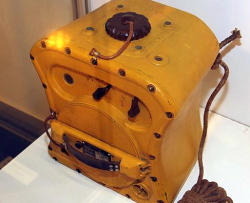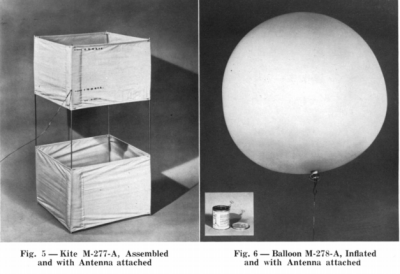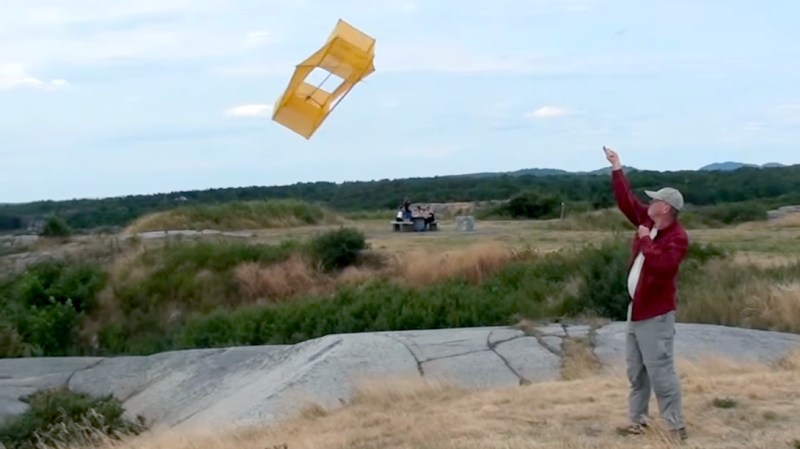Your airplane has crashed at sea. You are perched in a lifeboat and you need to call for help. Today you might reach for a satellite phone, but in World War II you would more likely turn a crank on a special survival radio.
These radios originated in Germany but were soon copied by the British and the United States. In addition to just being a bit of history, we can learn a few lessons from these radios. The designers clearly thought about the challenges stranded personnel would face and came up with novel solutions. For example, how do you loft a 300-foot wire up to use as an antenna? Would you believe a kite or even a balloon?
Why Such a Big Antenna?
The international rescue frequency in those days was 500 kHz. This allowed simple spark gap transmitters to be placed on lifeboats even in the 1920s. Unfortunately that is 600 meters wavelength! A quarter-wave antenna at that frequency is 150 meters long or nearly 500 feet.
After the Titanic sunk, ships maintained a watch on 500 kHz, and ground-wave propagation ensured a good range. Even after spark gaps fell out of favor, they continued to be allowed on lifeboats due to their simplicity. So by the time the war started, 500 kHz was the frequency everyone monitored for distress traffic
History

The German NS2 (or NSG2) was a two-tube 500 kHz transmitter with a crystal oscillator. In 1941, the British captured one and created their own version, the T-1333. A second captured unit went to the United States, spawning the SCR-578 and its transmitter, the BC-778. An SCR-578 had a folded metal frame for making a box kite and a balloon with a hydrogen generator. Water would cause the generator to produce gas and the balloon would carry one end of the antenna aloft. The 4.8W transmitter could reach about 200 miles with its 300 feet of antenna wire lofted into the air. You needed at least 175 feet of antenna out for the radio to work.

The designers knew you wouldn’t be able to erect that much wire in a life raft. The kite or balloon were workable solutions and would deploy the antenna from a reel mounted in the radio (you can watch a modern-day kite launch in the video, below). Not only that, they could obviously envision what the situation would be like on a tiny raft bobbing around. These radios all had a shape designed to clamp between your knees during operation. The hourglass-like shape spawned the nickname …read more
Source:: Hackaday

